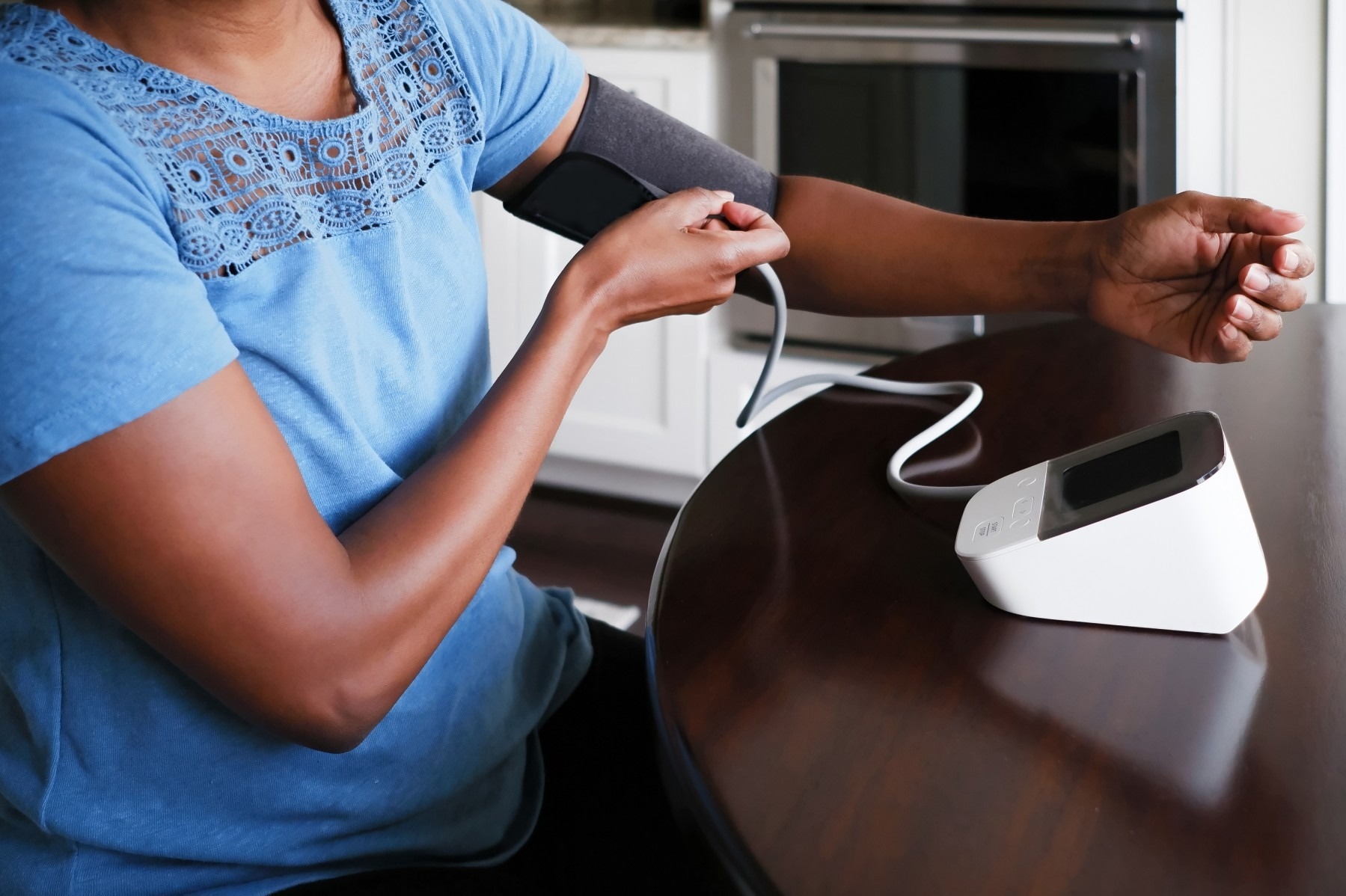Ohio State University (OSU) scientists have fabricated the first wearable sensor that detects and tracks muscle atrophy.

The proposed sensor aims to help patients who suffer from muscle atrophy monitor changes to their health in a more convenient way. Image Credit: Getty Images.
Muscle atrophy is normally a side effect of degenerative disease, aging, or muscle disuse.
A new study reported in the journal IEEE Transactions on Biomedical Engineering indicates that an electromagnetic sensor composed of conductive “e-threads” could be utilized as a substitute for frequent monitoring with the help of MRI.
For their work to be validated, 3D-printed limb molds were fabricated by the scientists and filled with ground beef to simulate the calf tissue of an average-sized human subject. Their study outcomes show that they were able to illustrate that the sensor could quantify small-scale volume changes in the entire limb size and track muscle loss of up to 51%
Ideally, our proposed sensor could be used by health care providers to more personally implement treatment plans for patients and to create less of a burden on the patient themselves.
Allyanna Rice, Study Lead Author and Graduate Fellow, Electrical and Computer Engineering, The Ohio State University
The study builds on Rice’s earlier work making health sensors for NASA. It is the first known method to track muscle atrophy using a wearable device. The space agency has shown interest in tracking the health of astronauts, as spending huge amounts of time in space could pose harmful effects on the human body.
Decades have been spent by scientists trying to understand and combat such effects, and the study gained inspiration from this struggle.
While researchers are aware that even crew members on short spaceflights have the potential to experience up to a 20% loss in bone density and muscle mass, there is not much data on what impact living in space for a very long mission could have on their bodies, stated Rice.
Our sensor is something that an astronaut on a long mission or a patient at home could use to keep track of their health without the help of a medical professional.
Allyanna Rice, Study Lead Author and Graduate Fellow, Electrical and Computer Engineering, The Ohio State University
However, creating a wearable device that has the potential to precisely quantify minute muscle changes in the human body is easier said than done.
Rice, along with her co-author Asiminia Kiourti, a professor in electrical and computer engineering at Ohio State, has developed the device to function by employing two coils, one that transmits and one that receives, and also a conductor made out of e-threads that runs along the fabric in a separate zig-zag pattern.
When we first proposed the sensor, we didn’t realize that we would need a stretchable material until we realized that the person’s limbs were going to be changing. We need a sensor that can change and flex, but it also needs to be conformal.
Allyanna Rice, Study Lead Author and Graduate Fellow, Electrical and Computer Engineering, The Ohio State University
Following some trial and error, the researchers discovered that while sewing in a straight line would restrict the elasticity of the sleeve, a zig-zag pattern was perfect for amplifying it. This pattern is the reason the sensor is scalable across many different body parts or even various locations on the same limb.
Despite the fact that the wearable will take years to be implemented, the study observes that the next significant leap would most probably be to connect the device to a mobile app, one that could be utilized to record and deliver health information instantly to healthcare providers.
Rice is also expecting to integrate the sensor with other kinds of devices for detecting and tracking health issues, like a tool for detecting bone loss.
Rice added, “In the future, we would like to integrate more sensors and even more capabilities with our wearable.”
This study was financially supported by NASA.
Journal Reference
Rica, A., et al. (2023) A Stretchable, Conductive Thread-Based Sensor Towards Wearable Monitoring of Muscle Atrophy. IEEE Xplore. https://doi.org/10.1109/TBME.2023.3248959.